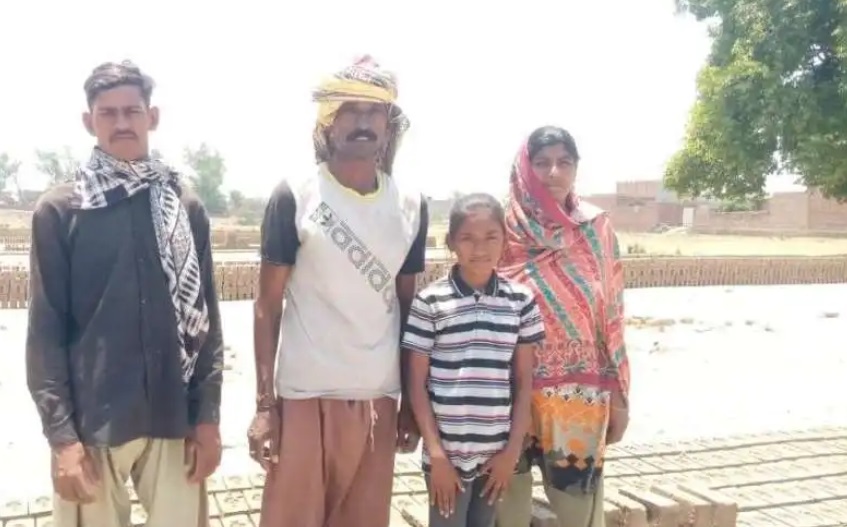













Temporary worker programs can play a crucial role in supporting the economy by filling labor gaps in industries such as agriculture, construction, and hospitality. These programs help address labor shortages, ensure businesses can operate efficiently, and stimulate economic activity in communities [36b3a42e]. However, it is important to implement these programs with appropriate safeguards to protect both foreign workers and domestic labor markets. Adequate labor protections, fair wages, and access to essential services should be ensured for temporary workers. Additionally, robust monitoring and enforcement mechanisms are necessary to prevent exploitation and abuse [36b3a42e].
On the other hand, exploiting child labor is a troubling sign of weakness in the labor market. Despite having a surplus of willing and able workers, some employers in the US are turning to illegal child labor. This is either due to deep prejudice against certain groups of workers or a dangerous addiction to cheap labor. Exploiting child labor threatens market efficiency and evolution, and reflects poorly on a wealthy nation like the US [9bddcca0].
Since 2021, many states in the United States have been considering or have passed legislation to weaken child labor laws, while a smaller number have considered or have been strengthening and updating the laws on their books. Efforts to protect child workers started in the early 20th century, with exposés of youngsters laboring in mines, factories, and canneries and performing long hours of field labor. The Keating-Owen Act of 1916 limited children’s work hours and forbade interstate sale of goods produced by child labor. The Revenue Act of 1919 imposed a 10% tax on the net profit of companies that employed children in certain industries. Frustrated opponents of child labor then moved to amend the U.S. Constitution, seeing it as the only way to remove children from dangerous and sometimes deadly workplaces and to ensure they received an education. Supporters of the Amendment argued that hard labor and a lack of schooling imperiled not just child workers, but the nation. Amendment opponents claimed giving work to children prevented them from becoming shiftless adults when they grew up, further noting that many families depended on their children’s wages. Some opposed the Amendment on economic grounds, arguing that it would prevent Black children from picking cotton and deworming tobacco. The Amendment passed in Congress but languished and was never ratified. Federal protection of some child workers finally arrived with the passage of the 1938 Fair Labor Standards Act. In the 100 years since the passage of the Child Labor Amendment, the debate about child worker protections continues, often echoing the previous deliberations [5995240e].
In a recent column titled 'For the Children: Part 1 of 3; Child labor is poor solution to worker shortages,' Joe Dorman, the CEO of the Oklahoma Institute for Child Advocacy, discusses the movement to weaken child labor laws in the United States and argues against relaxing these laws as a solution to the current labor market challenges [7dbf6fa5]. The author mentions that four states have already enacted these laws and eight states have introduced legislation. Dorman was invited to testify at an Oklahoma House interim study on child labor laws. The article highlights the current unemployment rate and job openings in the U.S., which is driven by the ongoing impact of the COVID-19 pandemic. It provides information about the minimum age for employment in Oklahoma and the exemptions for children working on farms or for parents. The article also mentions the work permit requirements for minors and the limitations on working hours. Dorman emphasizes that relaxed child labor laws can harm the education and well-being of young workers [7dbf6fa5].
The Oklahoma Institute for Child Advocacy is mentioned as an organization advocating for the needs of children and youth in the state [25c3d861].
According to a report by the International Labour Organization (ILO), forced labor in the private economy generates $236 billion in illegal profits per year. This represents a $64 billion increase since 2014. The report reveals that Europe and Central Asia account for the largest share of these illicit gains, followed by Asia, the Pacific, and the Americas. The ILO chief, Gilbert Houngbo, stated that people in forced labor are subject to multiple forms of coercion, with the deliberate and systematic withholding of wages being the most common. The report estimates that traffickers and criminals are generating close to $10,000 per victim. In 2021, there were 27.6 million people engaged in forced labor, which translates to 3.5 people for every thousand people in the world. The ILO defines forced labor as work extracted under the menace of any penalty and for which people don't offer themselves voluntarily [f912562d] [2d4c44c7].
Florida recently passed House Bill 49, which allows 16- and 17-year-old children to work more hours starting July 1, 2024. The bill aims to increase opportunities for young individuals to work and generate income, reduce burdensome requirements for employers, and increase labor force participation among 16- and 17-year-olds. Employers should review child labor laws in the states where they operate to ensure compliance with applicable laws and any recent changes. The Fair Labor Standards Act establishes a general minimum age of 16 for employment in nonhazardous occupations and 18 for hazardous occupations. Penalties for non-compliance with child labor laws remain stiff [16a57208].
Data from the National Bureau of Statistics (NBS) in Nigeria reveals that 50.5% of Nigerian children between the ages of 5 and 17 are engaged in some form of economic activities. The NBS report, titled 'Nigeria Child Labour and Forced Labour Survey 2022,' states that 39.2% of children are in child labor, and 22.9% are involved in hazardous work. The North-west geopolitical zone has the highest number of children in child labor and hazardous work. The South-east region has the highest prevalence of children involved in child labor at 49.9%. Children in child labor spend an average of 14.6 hours per week working, with older children spending more time working than younger children. Boys in child labor spend more time working per week on average than girls. 53.3% of children in child labor have been exposed to at least one workplace hazard. Girls are more likely to be engaged in household chores than boys. In the 5-14 age group, 77.6% of children attend school while 46.5% are working and 11.2% are exclusively working. Children living in rural areas are more likely to be working and less likely to attend school than children living in urban areas [9c312ae5].
According to a report by children's rights activist and lawyer, the actual number of child laborers in Iran exceeds three million. The government's statistics on child laborers are inaccurate, with the IAPSRS identifying 120,000 child scavengers in 2018, while former Minister Ali Rabiei claimed there were no child scavengers in Iran. Child labor in Iran is also exploited by organized crime groups, particularly in garbage collection. The IAPSRS had 44 centers covering 6,000 children before its dissolution. In 2020, the founder and director of IAPSRS and two managers were detained by Iranian security forces, and the organization was subsequently dissolved. Iranian lawyers have urged the UN to end cooperation with Iran to stop executions [b29da02e].
The article 'Modern-Day Slavery: Bonded Labour Spares Neither Young Nor Old' explores the issue of bonded labor in India, highlighting the testimonies of individuals who have experienced this form of modern-day slavery [fa79c062]. It discusses the stories of Pintu Kumar, Lukas Lomga, Mohammed Ullah, Dayalu Nial, Ajay Kumar, Danish Mohammad, Fatima Noor, Malkhan Singh, and others who have been trapped in bonded labor and subjected to various forms of abuse and exploitation. The article also addresses the role of caste-based oppression and human trafficking in perpetuating bonded labor, as well as the challenges faced in securing justice and rehabilitation for victims. Despite the existence of laws and rehabilitation schemes, the implementation and enforcement of these measures are often inadequate, leaving many bonded laborers without access to justice and support. Bonded labor is a global issue that requires concerted efforts to eradicate [fa79c062].
According to a recent article by Malaysian Christian News, an estimated 3.5 to 5 million workers, mostly bonded and forced laborers, work at 20,000 brick kilns across Pakistan. Many workers, including children, are victims of trafficking and exploitation. The children of workers are the most vulnerable, with at least two million children working in slave-like conditions. The involvement of influential people in the industry exacerbates the situation, with kiln owners often refusing to register workers and flouting regulations. Pakistan ranks 80th out of 100 countries on the Global Slavery Index 2023. Activists say the situation is unlikely to improve without a support system and better enforcement of laws [75d3b00a].
According to a report by the UN Human Rights Office, the use of forced labor by the Democratic People’s Republic of Korea (DPRK) against its citizens has become deeply institutionalized and raises serious human rights concerns. The report is based on interviews conducted with victims and witnesses of forced labor who managed to escape and now live abroad. The report concludes that people in North Korea are 'controlled and exploited through an extensive and multi-layered system of forced labor' that is 'directed towards the interests of the State rather than the people.' The report calls on the North Korean Government to abolish the use of forced labor and end any forms of slavery, and urges the international community to investigate and prosecute those suspected of committing international crimes. It also calls on the UN Security Council to refer the situation to the International Criminal Court [8562ba52].
Phone farms, where individuals from developing countries perform repetitive digital tasks for meager wages, have emerged as a form of modern-day exploitation in the digital economy. Workers in phone farms face grueling hours, hazardous conditions, and health issues. These farms contribute to the spread of misinformation, spam, and cybercrime, eroding trust in online platforms. Governments must enact and enforce labor laws, corporations must ensure fair labor practices, and consumers should support ethical companies. The human cost of phone farms includes alienation, despair, burnout, anxiety, and even suicide. Governments should enact comprehensive labor laws, invest in education and skill development, and corporations should commit to ethical sourcing and transparent reporting. The eradication of phone farms requires a holistic approach and the collective effort of governments, corporations, and individuals. By addressing the root causes of exploitation, protecting workers' rights, and promoting ethical business practices, a more just and equitable digital economy can be built [39e29b03].